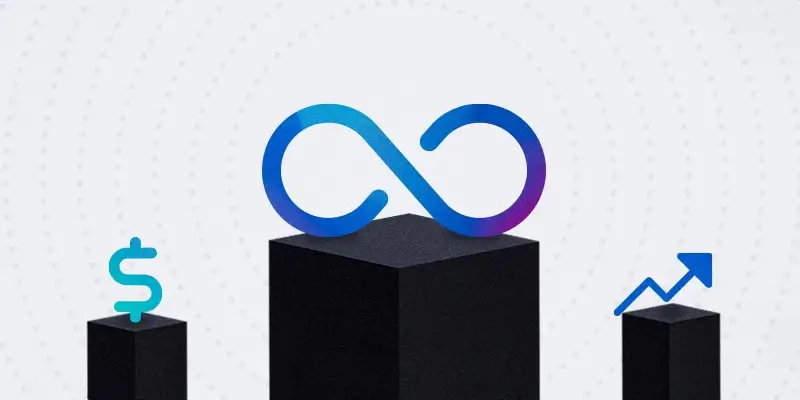DevOps is the combination of efforts from your development and operations teams. Addressing these considerations throughout the entire development process creates stronger products at a faster rate. Many teams have implemented this strategy. Those that have not need to get onboard or face being left behind.
DevOps teams are responsible for managing the product lifecycle from planning through release. The goal is to streamline and optimize this process.
Companies that have been meaning to address DevOps implementation for Salesforce might be hesitant because it seems like a lot of work. However, this process doesn’t need to be confusing or intimidating. Proper planning and intentional actions will set your team up for success and enable them to produce new applications and updates in a quick, cost-effective, and repeatable way.

Here are 10 tips to get the most from DevOps implementation for Salesforce:
- Identify Goals
- Establish Data Governance Strategy
- Analyze Current Systems and Procedures
- Identify Opportunities for Automation
- Source Powerful Tooling
- Facilitate and Maintain Open Communication
- Stress Importance of Testing
- Maintain Focus on Data Security
- Schedule and Analyze Reports
- Frequently Revisit and Examine Processes
1. Identify Goals
What do you hope to accomplish after DevOps implementation for Salesforce? Are you hoping to increase release velocity? Support data security standards? Improve the quality of your releases?
Everything can’t be done at once. Taking the time to identify your goals will point toward the initial steps that can be taken to see the benefits you most want to see.
2. Establish Data Governance Strategy
Salesforce DevOps is all about data—how you handle it, how you use it, and how you can get the most from it. The best way to make sound decisions is to ensure your data is of the highest possible quality. Data governance aims to achieve this.
Establishing a data governance strategy will take a bit to get rolling but will support your DevOps efforts moving forward.
3. Analyze Current Systems and Procedures
You don’t know what to improve if you don’t know where your problems currently are. Look at your current dev pipeline to find areas that are operating smoothly and others that could use some improvement.
Speak with your team members. Read through any available reporting. The goal is to find the most glaring issues so you can address them first. This will help you see immediate benefits.
4. Identify Opportunities for Automation

Automation is the single greatest asset to a DevOps implementation for Salesforce. Redundant, manual tasks are prone to errors which can become very costly over time. Automating these tasks will decrease errors while also speeding along processes.
Which areas in your current dev pipeline could be automated? Code quality checks and data backups are a great opportunity to introduce automation to your Salesforce DevOps pipeline.
5. Source Powerful Tooling
Your team members are your greatest asset in maintaining a quality Salesforce dev pipeline. Enabling them with the proper tools allows them to offer even greater benefits to your company by producing higher quality work, faster.
Automated release management tools such as CI/CD facilitate greater collaboration between your team members. Finding a Salesforce DevOps platform that supports all the tools you need will ensure functionality and provide the support your team needs.
6. Facilitate and Maintain Open Communication
True DevOps includes the efforts of multiple teams throughout the entire dev pipeline. The old days would have one team complete their work before handing it off to another, but that’s not the way things work anymore. This increases speed but also introduces the opportunity for errors.
Open communication between these teams is essential. Make sure everyone knows who to go to for questions before rolling out a DevOps implementation for Salesforce.
7. Stress Importance of Testing
Failed deployments create redundant work. Errors in live products lead to unhappy end users and can even introduce data security vulnerabilities. DevOps implementation for Salesforce needs to include multiple checkpoints to test your code.
Static code analysis will check your code as it’s written. Continuous integration will test how the code from multiple developers interacts with each other. These types of testing are integral to a successful DevOps pipeline.
8. Maintain Focus on Data Security

Data security needs to be a constant concern for your company. There are numerous potential threats to your Salesforce environment, so you need to take every possible precaution to secure it. An optimized DevOps pipeline is a great way to introduce timely updates to address emerging data security vulnerabilities.
Errors and bugs within your code can lead to data security vulnerabilities if they are not addressed prior to production. Ample testing will go a long way to prevent these vulnerabilities from being seen in live applications.
9. Schedule and Analyze Reports
Documenting the successes and failures of your DevOps implementation for Salesforce will help you track your efforts over time. These reports can show data points such as deployment success rates and the number of errors found throughout the pipeline.
Schedule these reports for the various stages of your DevOps pipeline and use the information to point you in the right direction for adjustments moving forward.
10. Frequently Revisit and Examine Processes
DevOps implementation for Salesforce is only the first step in moving your dev environment in the right direction. The DevOps strategy needs to be continually revisited and revised over time. There is no one-size-fits-all approach to DevOps. You will need to tweak your approach as time goes on.
Implementing a DevOps strategy can provide great benefits for Salesforce development teams. Take your time at the outset of the implementation to properly align your efforts. A well thought out approach will help provide immediate benefits and set you up for future success.
